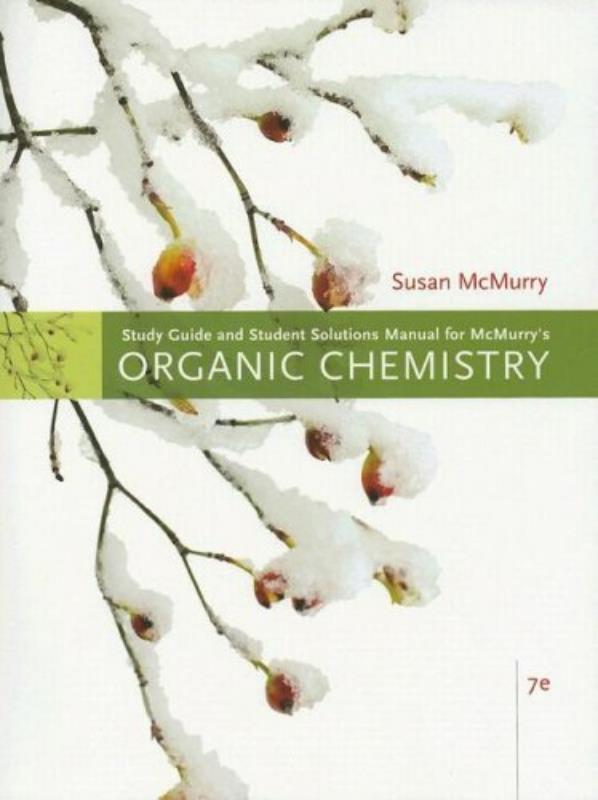
Susan McMurry Study Guide and Student Solutions Manual for McMurry's ORGANIC CHEMISTRY 7e
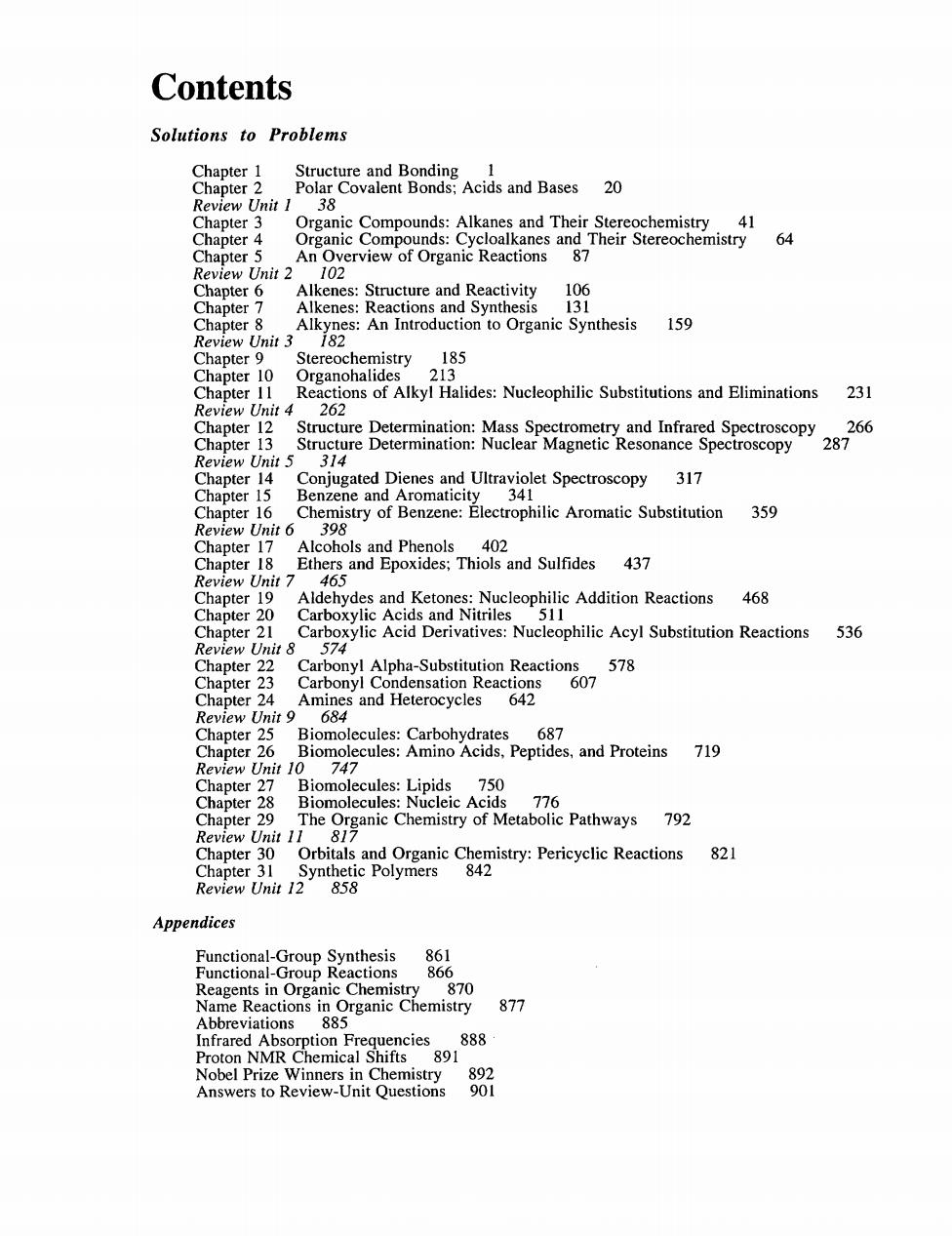
Contents Solutions to Problems Chapter 1 Str o 20 apt Their Stereoch 64 02 lk An Introduction Synthesis 159 Chapter 9 Stereochemistry 185 Chapter 231 Review Unit 4 Chapter 13 pvopy 26g Chapter 15 317 Chapter 16 stry of Benzene: Electrophilic Aromatic Substitution 359 Chapter 17 Is and Sulfides 437 Chapter Aldehyd s and Ketor cleophilic Addition Reactions 468 Chapter 2 CarboxyAcid Derivatives:Nucleophilic AcyI Substitution Reactions53 nyl Alpha-Substitution Reaction 578 Chapter 23 Carbonyl s and Ho de 607 eterocycles 684 Chapter 2 687 Review Unit 10 io747 Peptides,and Proteins 719 Chapter 776 Chapter 29 Thea Chemistry of Metabolic Pathways92 Orbitals and Organic Ch 821 Polymers y:Perieyelie Reactions Review 858 Appendices Functional-Group Synthesis ents in Organis Chemist 870 877 ,888 Winn n Chemistry Answers to Review-Unit Questions
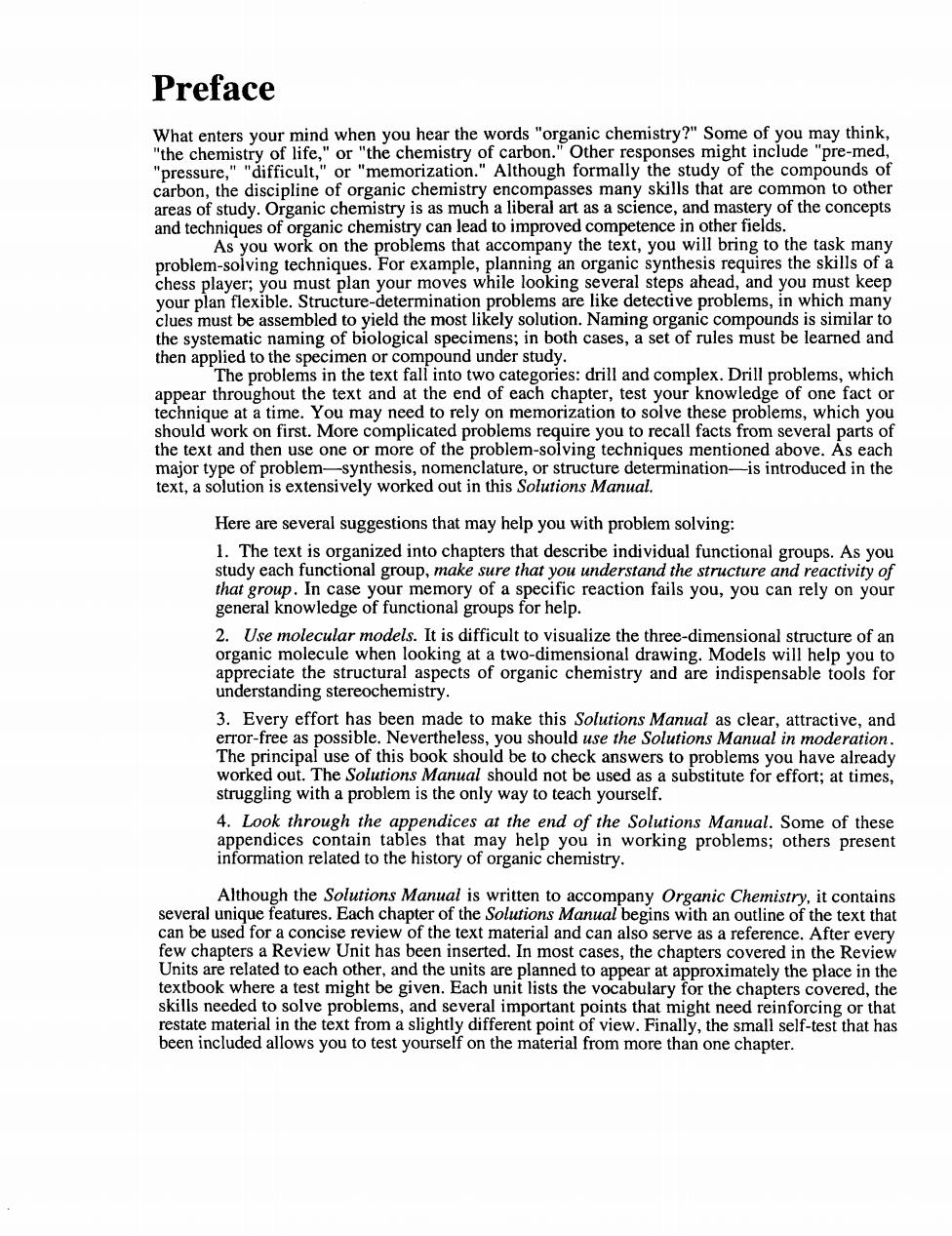
Preface may think What enters your mind when you heords organic chemistrySom of "the che the e chem gh maly the study of the con mpasses many skills that are common to othe stry canI ad to improved on the task s For example lanning an organic nthesis r cquires the skills of a umust pn your moves while looing aad,and you must keep nination problems ar problems,in which many s must b ass t e in both case st be learned and then applied to the specimen or com ound under study. The proble in the text fall into two f owle ich plicated problems rec ire you to recall facts from the text and then se one or nore of the problem-solving techniques mentioned above.As each em s,nome or struc ermination-is introduced in the Here are several suggestions that may help you with problem solving: is anizcdintoch pters tha ups.As you that gre In general knowledge of functional groups for help. 2.Use molec ula ar mo It is difficult to visualize the three-dimens onal stru ture of ar 0 cate the struct ural aspe ganic che understandinsterchemist nd are indis ools fo 3.Every effort has s been m o mak c thi Soluti cle attractive,and e ncipal use f this e ok sho ould be to check answers o worked out. The Solu ions Manual should not be used as a substitute for effort:at times struggling with a problem is the only way to teach yourself A Look thr the intormation related to the history of organic chemistry. can be used for a concis review of the text material and can also serve as a reference.After every few chapter Onit has erted.In mos n the Revie textbook where a test might be give ly the place skills needed to solve problems and several important points that might need or tha been ineue the text from a slightly different w. thay.the small self-test that has ws you to te one chapter
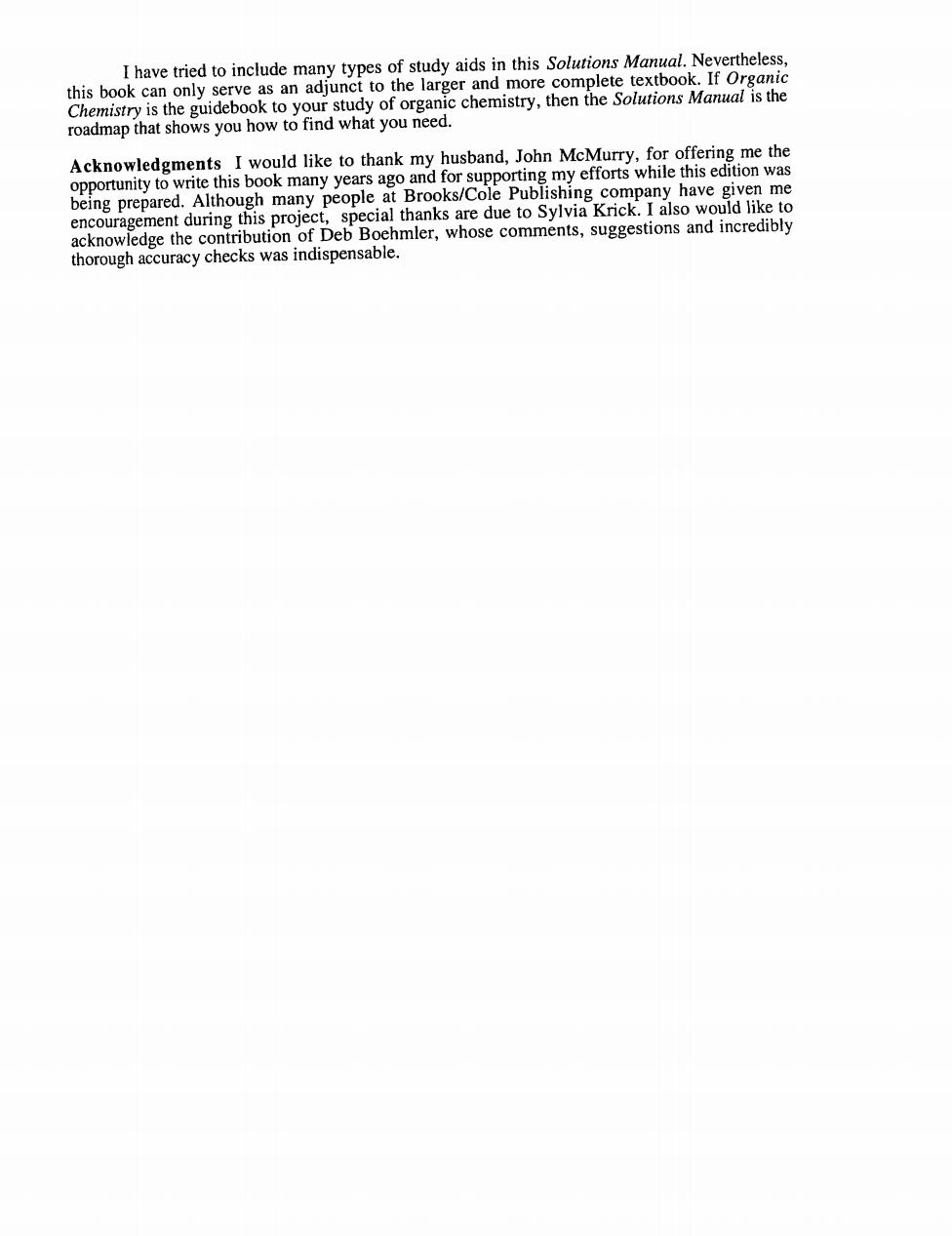
I have tried to include es of study aids in this Solutions Manual. this boo er and quidebook to your ions Manual is the t you nee ould like to thank my husband.hn ite this pook many years uhing .Although many people encouragement during this also woul
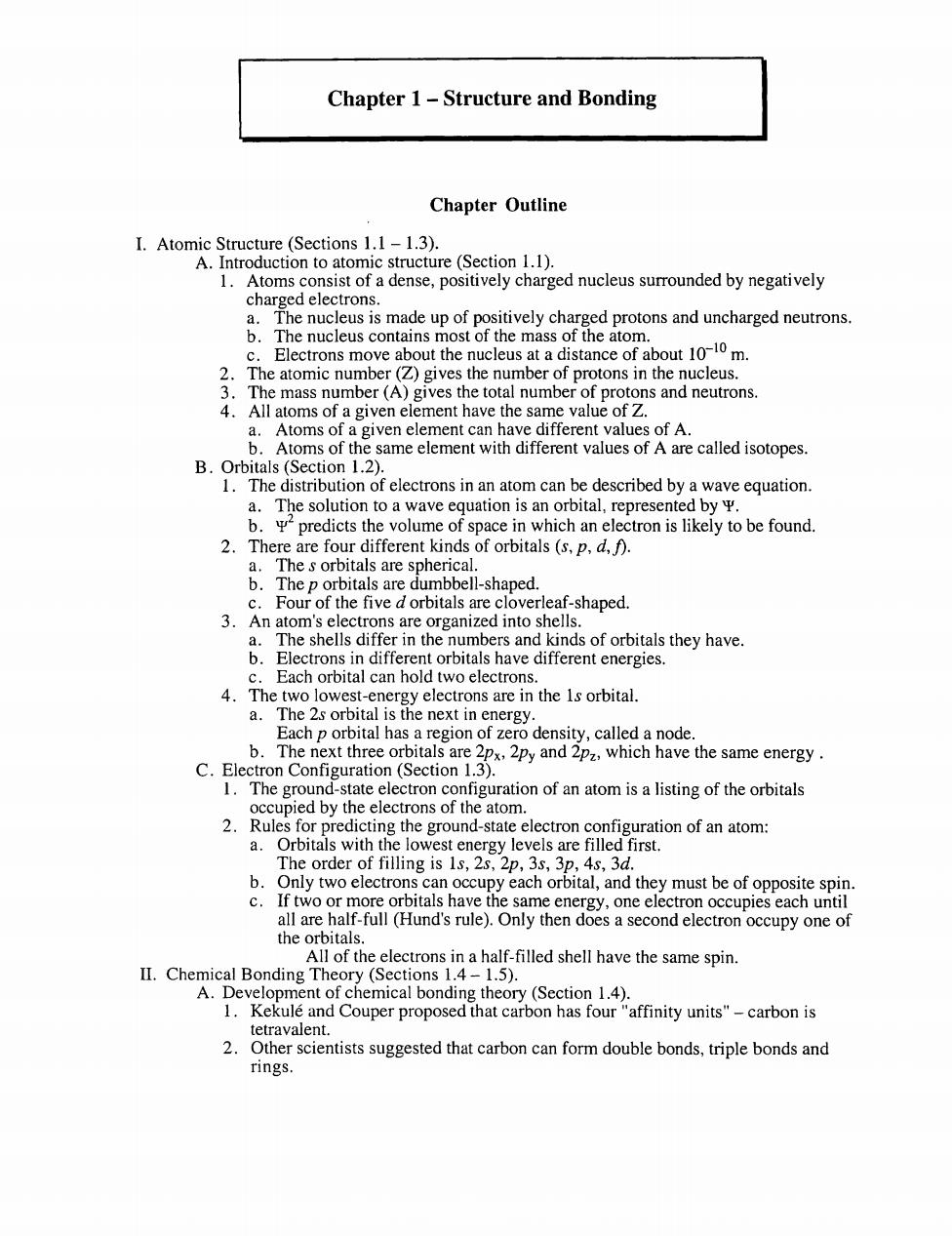
Chapter 1-Structure and Bonding Chapter Outline I.Atomic Structure(Sections 1.1-1.3). A.Introduction to atomic structure(Section 1.1). 1.Atoms consist of a dense,positively charged nucleus surrounded by negatively charged el made up of positively charged protons and uncharged neutrons b.The nucleus contains most of the mass of the atom. Electrons move about the nucleus at a distance of about 101m. nucleus. 4.A s and neutrons a.Atoms of a given element can have different values of A. Aroms of the same element with different values of A are called isotopes. on of electrons in an atom c an be described by a wave equation The solution to a wave equation is ar rhital re sented by b.predicts the volume of space in which an electron is likely to be found. 2.There are four different kinds of orbitals (s,p,d,A). a.The s orbitals are spherical. b.2 ell-shaped 3.An atoms leaf-shaped s are organized into shell The shells differ in the numbers and kinds of orbitals they have. s have different energies. The che 1s orbital a. next in enery. Each p orbital has a region of zero density,called a node b. C.Ele ee or itals are pand pwhich have the same energy configuration of an atom is a listing of the orbitals occupied by the electrons of the atom. 2.Rule g the ground-state electron configuration of an atom: a.Ort de ergy le · b.Only two electrons can occur all are ha henhalf-filled shell have the sam spin II.Chemical Bonding Theory (Sections 1.4-1.5). hemical bonal ng theory (Section 1.4). ravalent ouper propose affinity units"-carbon is 2.Other scientists suggested that carbon can form double bonds,triple bonds and rings